Vital signs are measurements that record important bodily functions. The most important vital signs in ALS are respiration and nutrition - measured by the Body mass index,the Vital capacity of the lungs and the Cough Tip Push. These vital signs provide important information for nutrition and ventilation therapy in ALS. In the ALS app, the values are displayed over time as a diagram and table in the "My vital signs" area. The values can be entered via your ALS app or your patient account in the outpatient care portal. The values are entered by yourself, by the treatment team in your ALS outpatient clinic or via our data management.
The body size is needed for the determination of the body mass index (BMI). With the help of the BMI, an assessment of the nutritional requirements and the provision of suitable nutritional products can be made.
ALS-App Tutorial: Body size
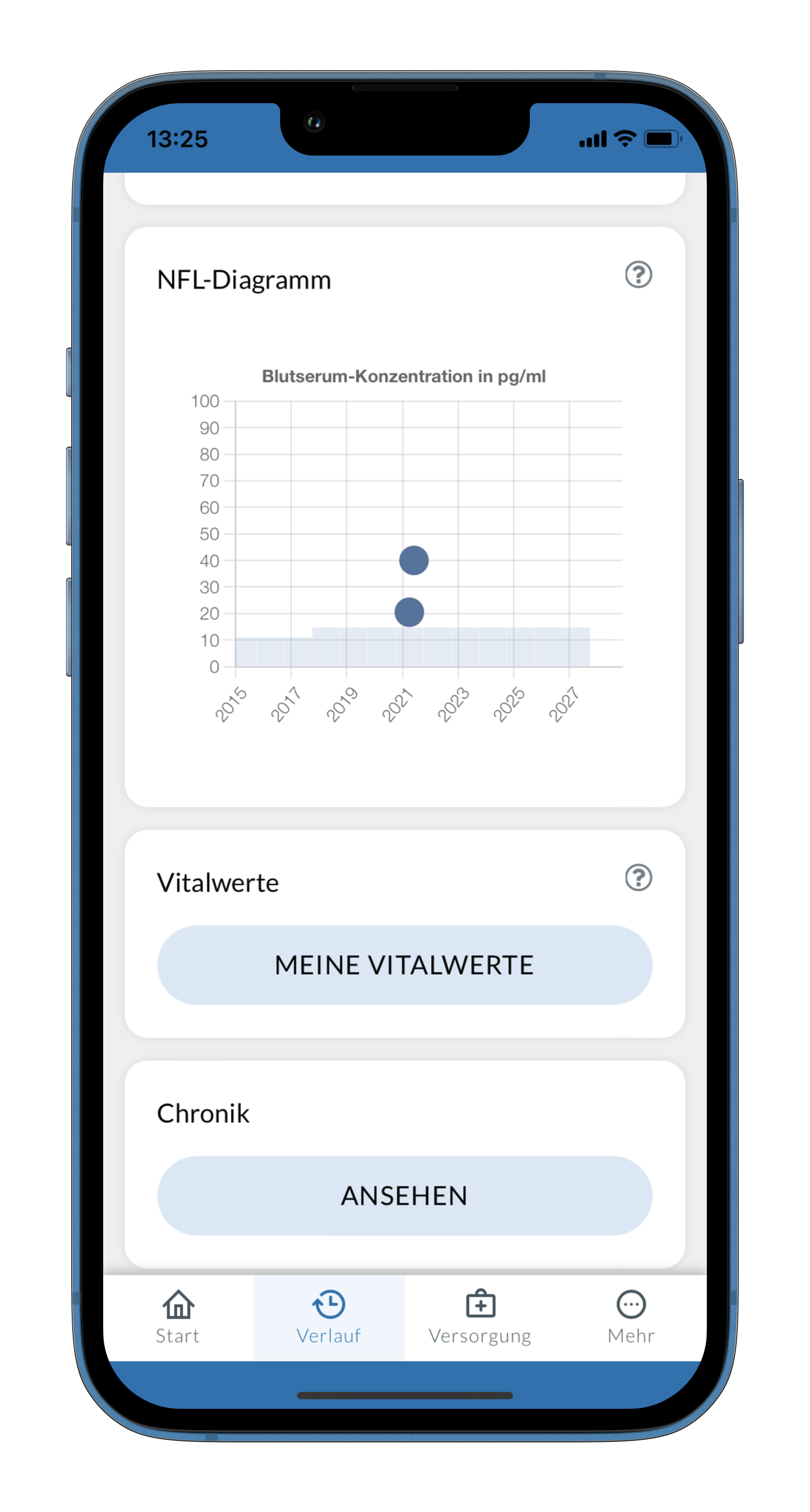
My vital signs
On the History page you will find the 'My Vital Signs' section. With the vital values, the data of the height, the body weight, the body mass index (BMI), the vital capacity of the lungs and the cough peak are displayed in chronological order.
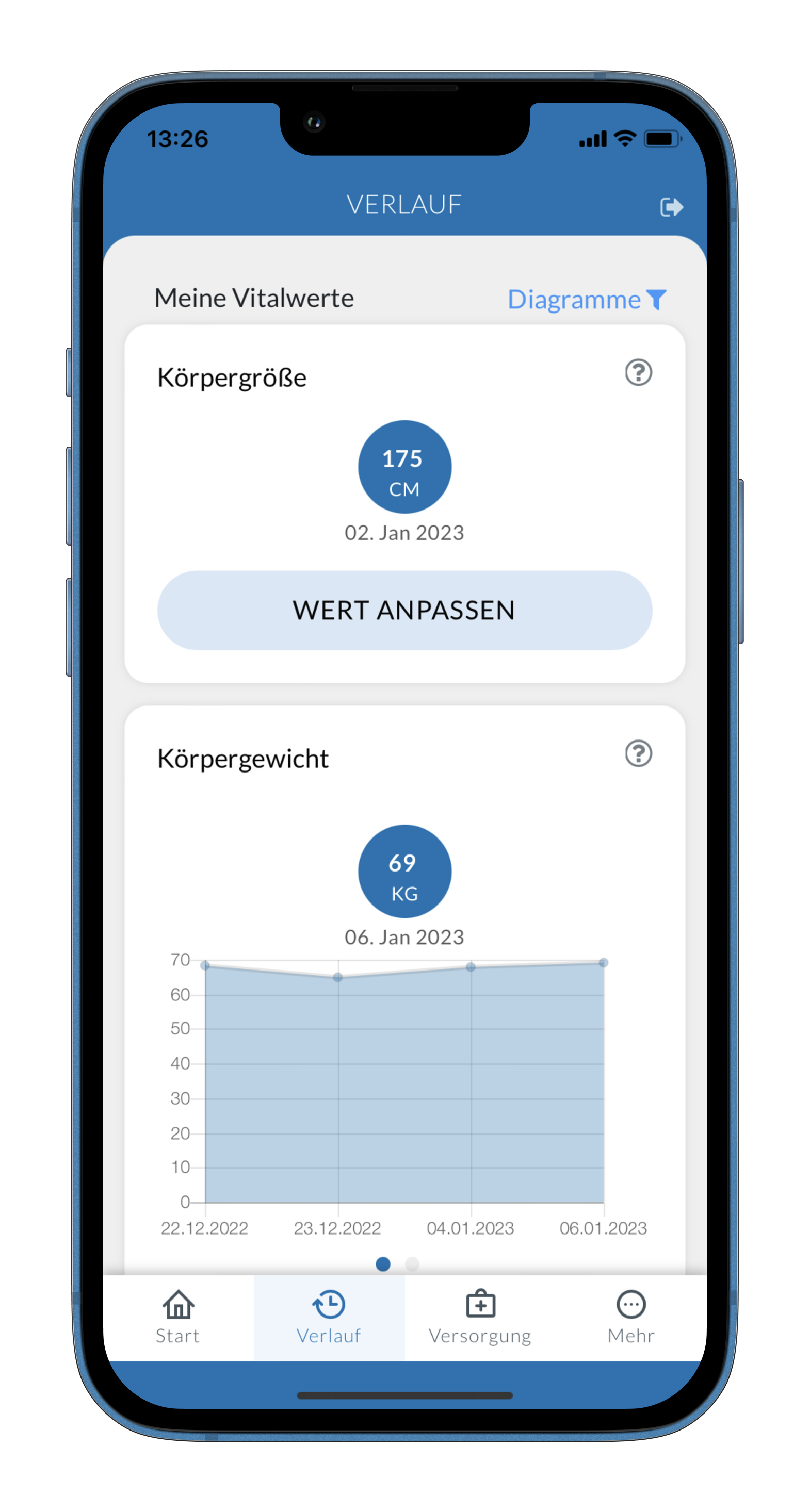
Body size
The current body height is displayed in the vital values.
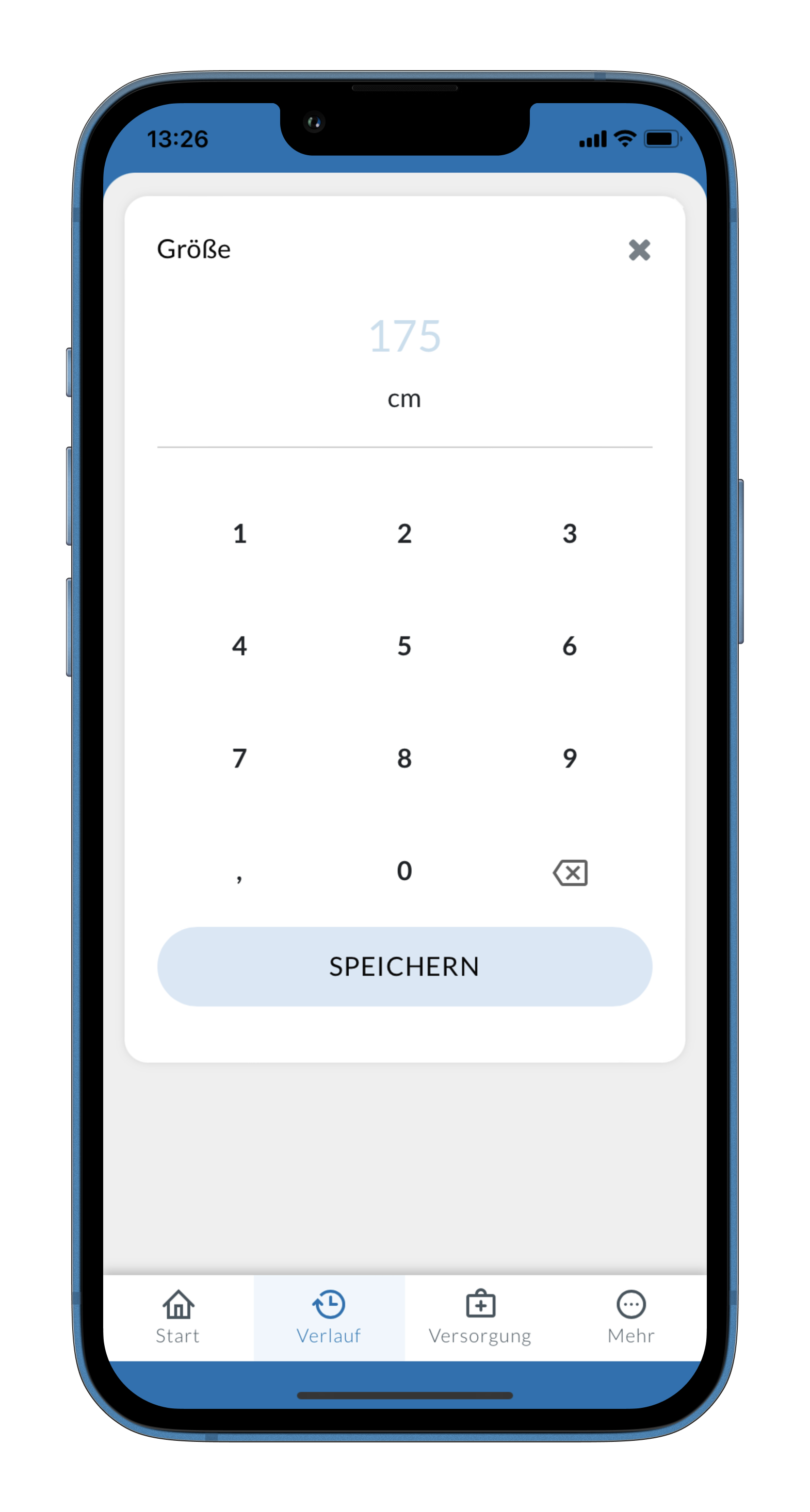
Input of the current body height
The 'Adjust value' button opens the input mask for the current body height
Unwanted weight loss affects more than 50% of all people with ALS. The weight loss can have various causes. A dysphagia with reduced food intake, increased energy demand due to respiratory dysfunction or an ALS-associated metabolic disorder can cause unwanted weight loss.
Weight loss is significant to disease progression, as malnutrition and undernutrition can be associated with reduced quality of life as well as shortened lifespan. In the ALS app, body weight is displayed as a vital sign over time.
ALS-App Tutorial: Body weight
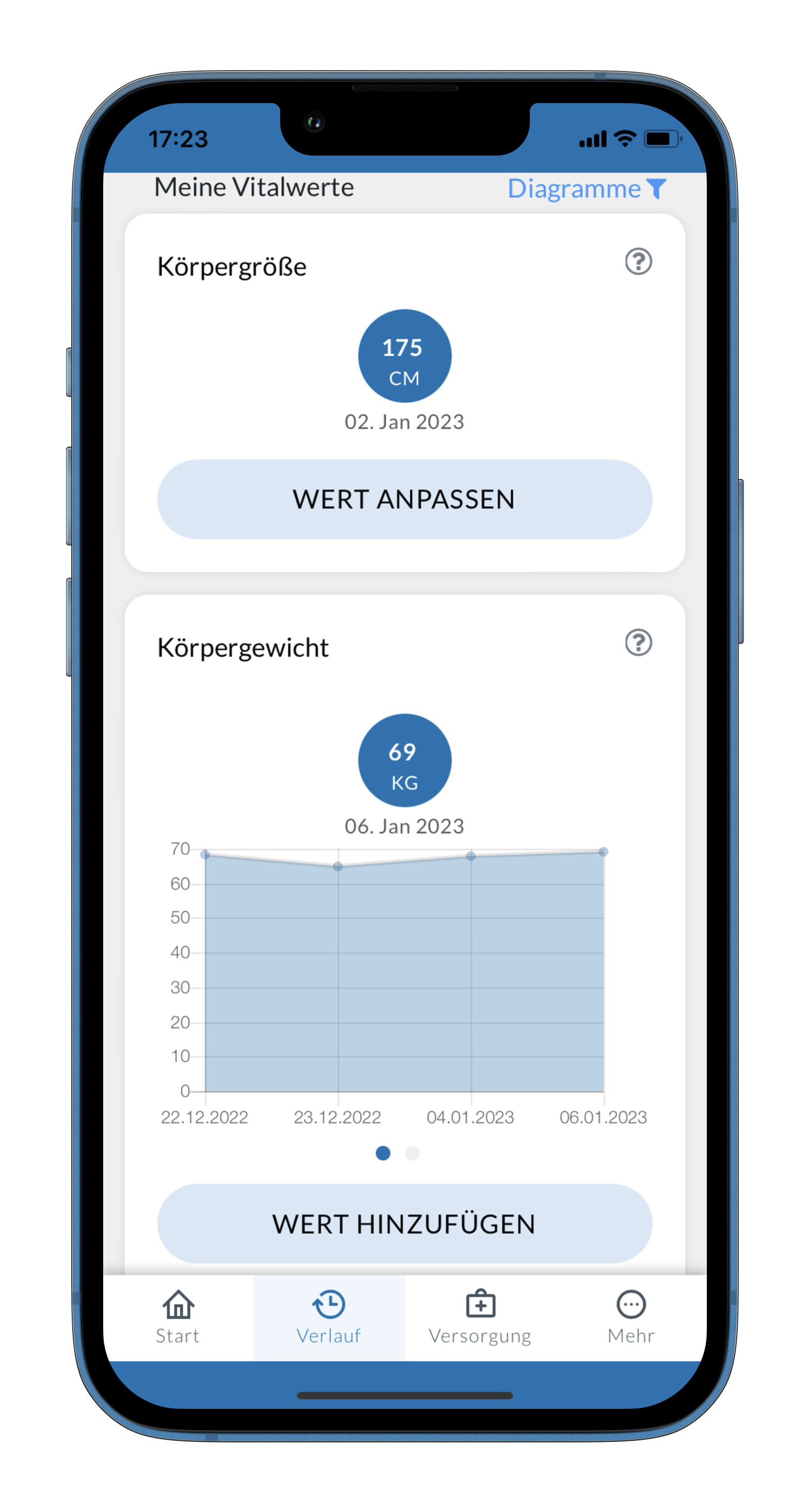
Course of the body weight
On the My Vital Signs page you will find the development of body weight over time in the form of a progress chart.
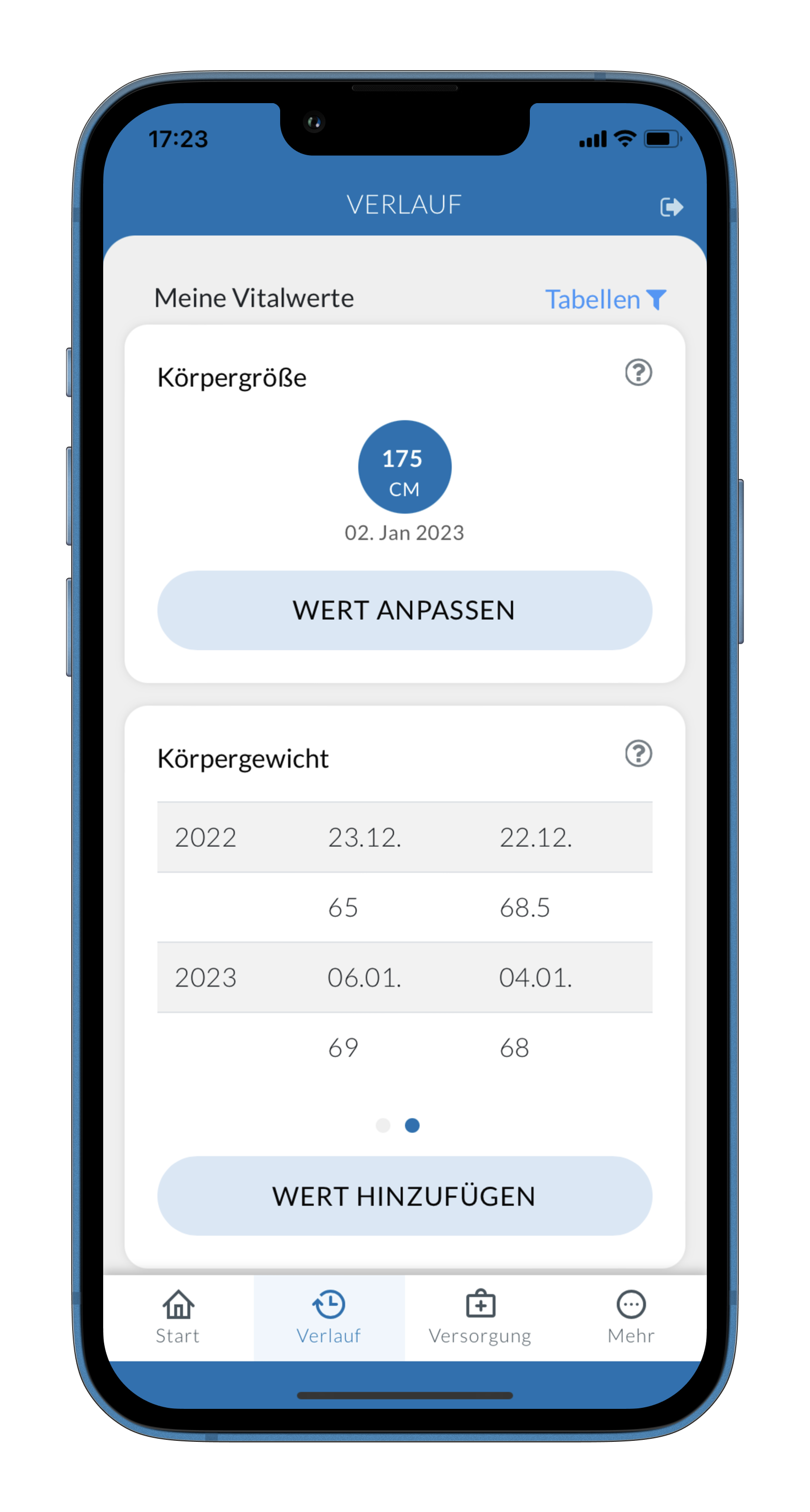
Body weight in a table
A selection menu in the upper right corner enables the display of the time course of the body weight as a diagram or table.
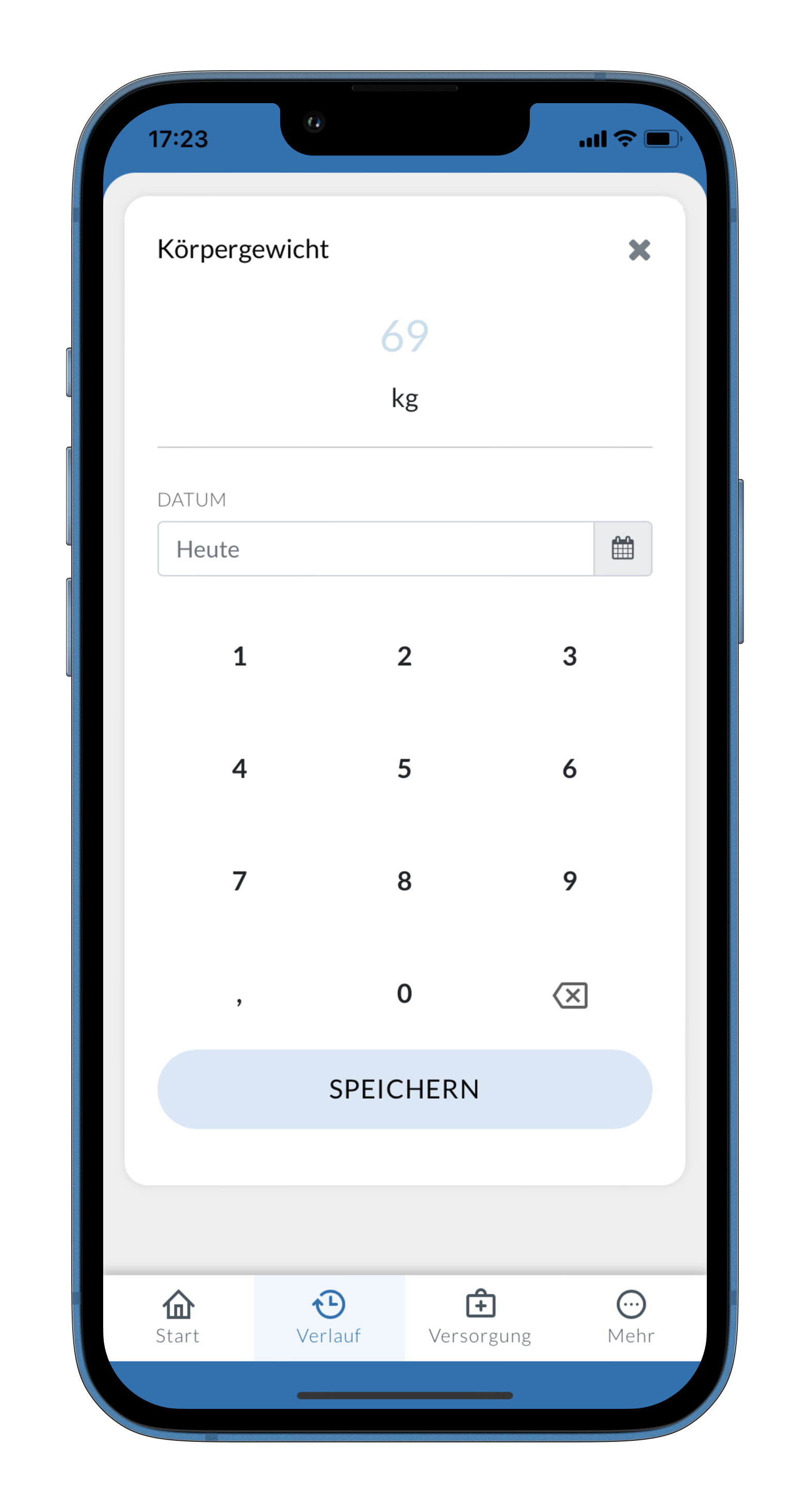
Input of the current body weight
The 'Add value' button opens the input mask for the current body weight
Weight loss has prognostic significance in ALS and should be prevented or effectively treated by optimal nutritional care. Body weight and height are important in the calculation of energy requirements. The relationship between body weight and height is determined in the so-called body mass index (BMI). BMI is calculated as body weight in kg/(height in meters)². For a person with a height of 1.7 m and a weight of 80 kg, the BMI is calculated as follows: 80 kg /(1.7 m)2 =27.7 kg/m2. A BMI below 18.5 kg/m2 is considered underweight and in need of treatment. In the ALS app, the BMI is calculated and the development over time is displayed in the vital signs.
ALS-App Tutorial: Body-Mass-Index (BMI)
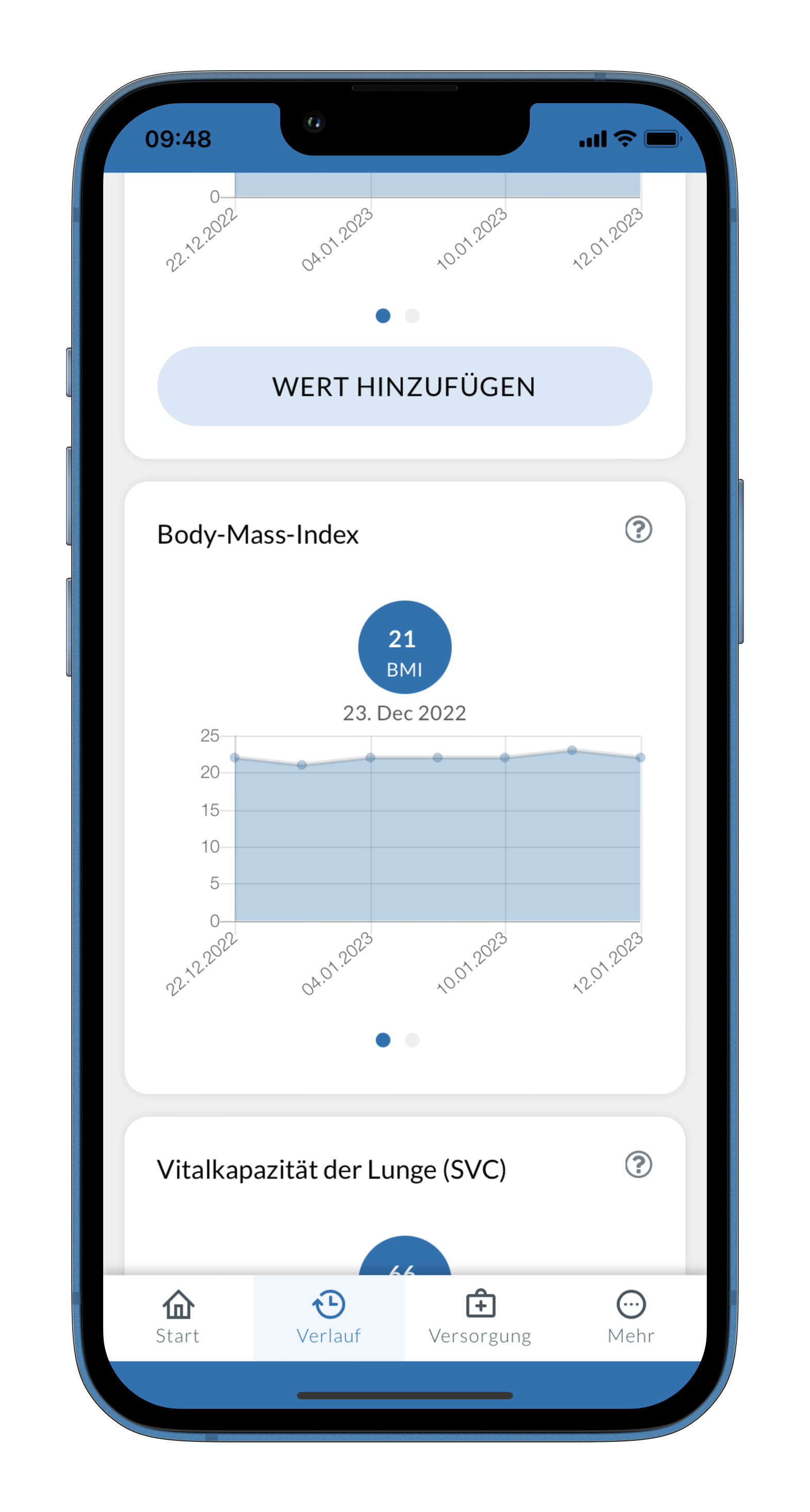
BMI history
On the My Vital Signs page you will find the development of the BMI over time in the form of a progress chart.
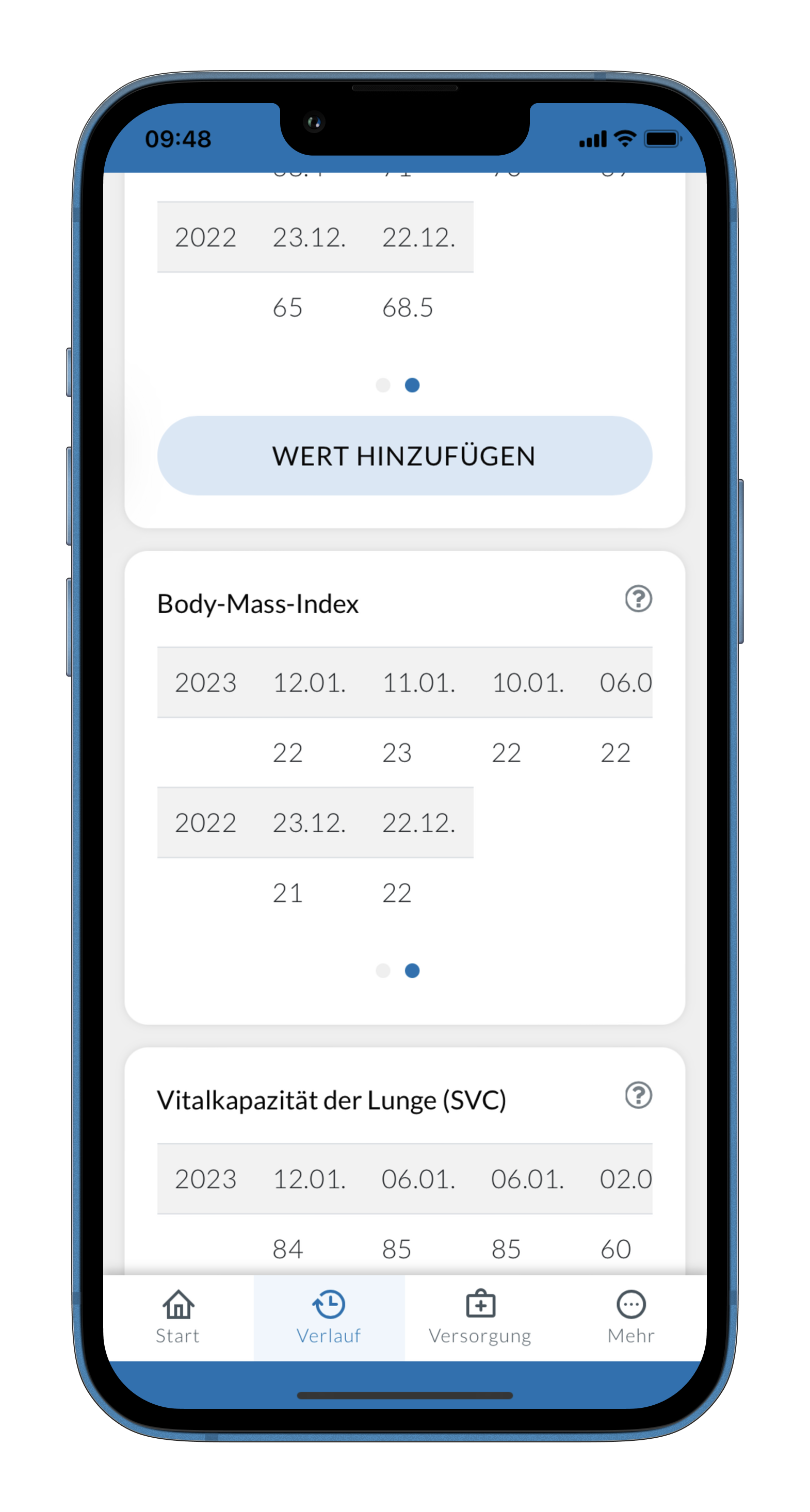
BMI in a table
A selection menu in the upper right corner enables the display of the time course of the BMI as a diagram or table.
Vital capacity (VC) is a parameter of pulmonary function diagnostics. A reduced respiratory capacity can be determined by the respiratory test of the VC. The VC measurement is a central value that is regularly determined in ALS outpatient clinics and used as a basis for decision-making for possible treatment measures. The measurement of the VC can be performed in different ways: by rapid inhalation and exhalation (FVC, forced vital capacity) or by slow inhalation and exhalation. (SVC, slow vital capacity). The SVC value is displayed in the ALS app.
ALS-App Tutorial: Vital capacity of the lungs
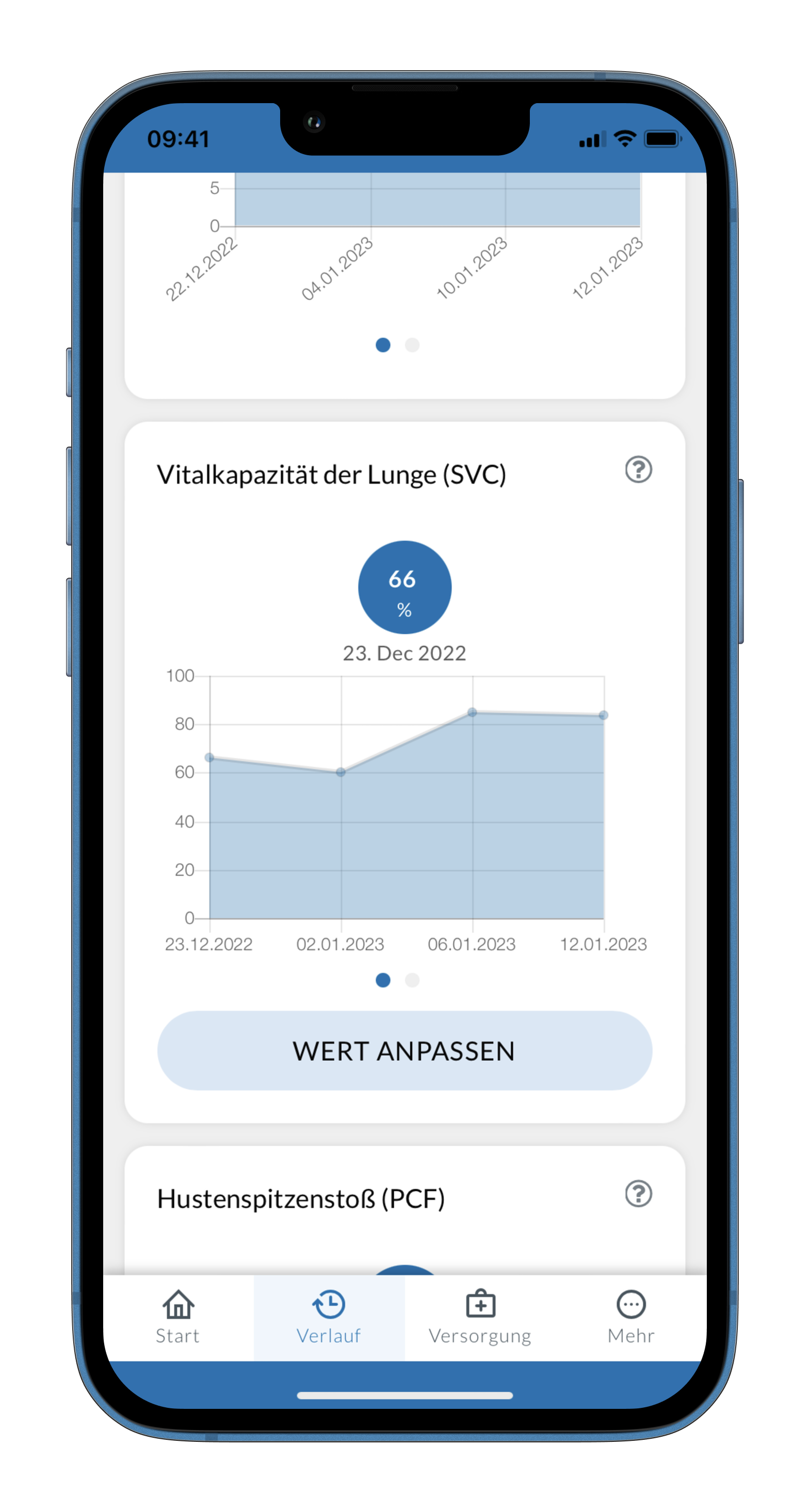
Course of vital capacity
On the My Vital Signs page, you will find the development of the vital capacity of the lungs over time in the form of a progress chart.
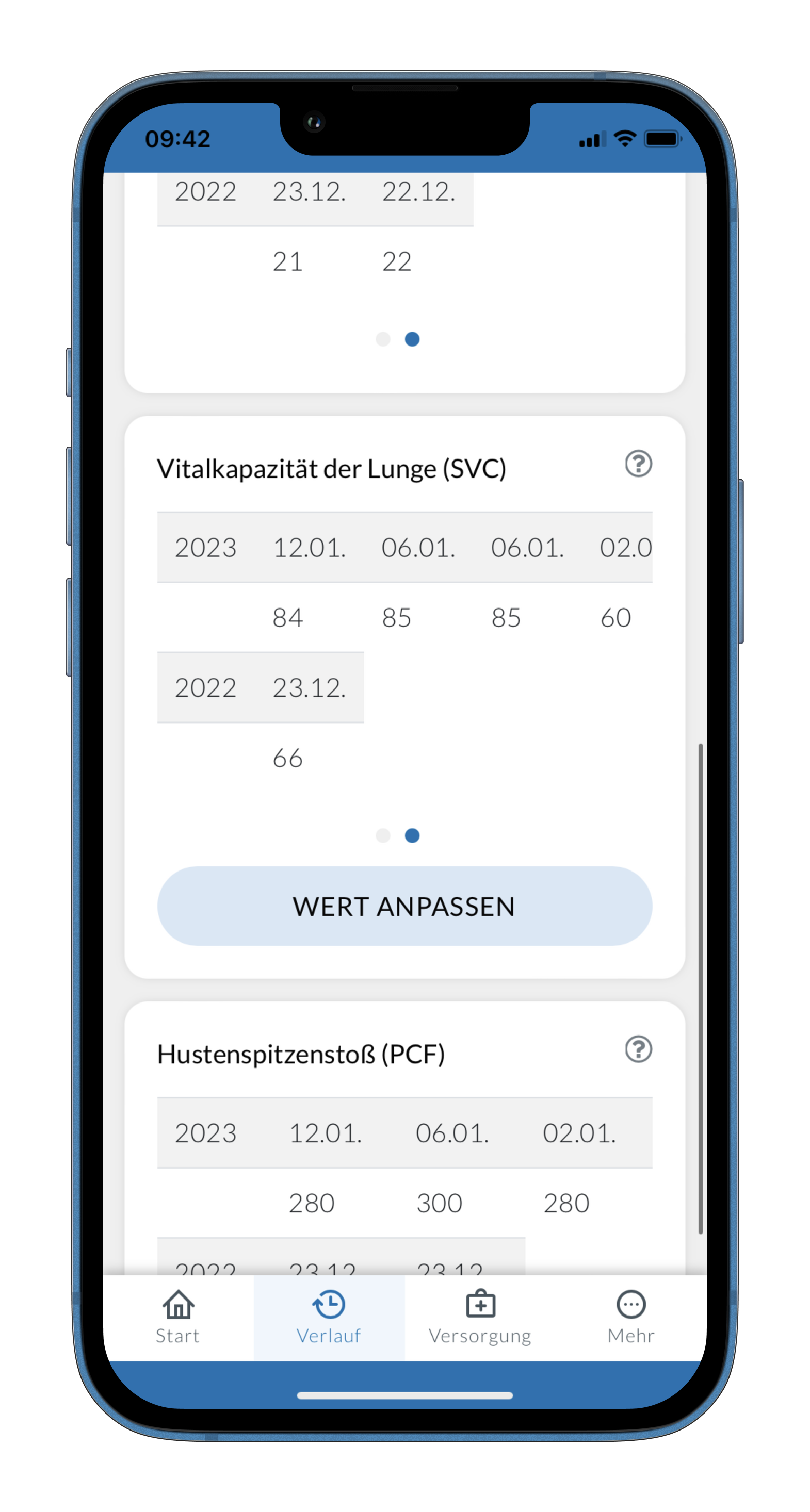
Course of vital capacity in a table
A selection menu in the upper right corner enables the display of the time course of the vital capacity of the lungs as a diagram or table.
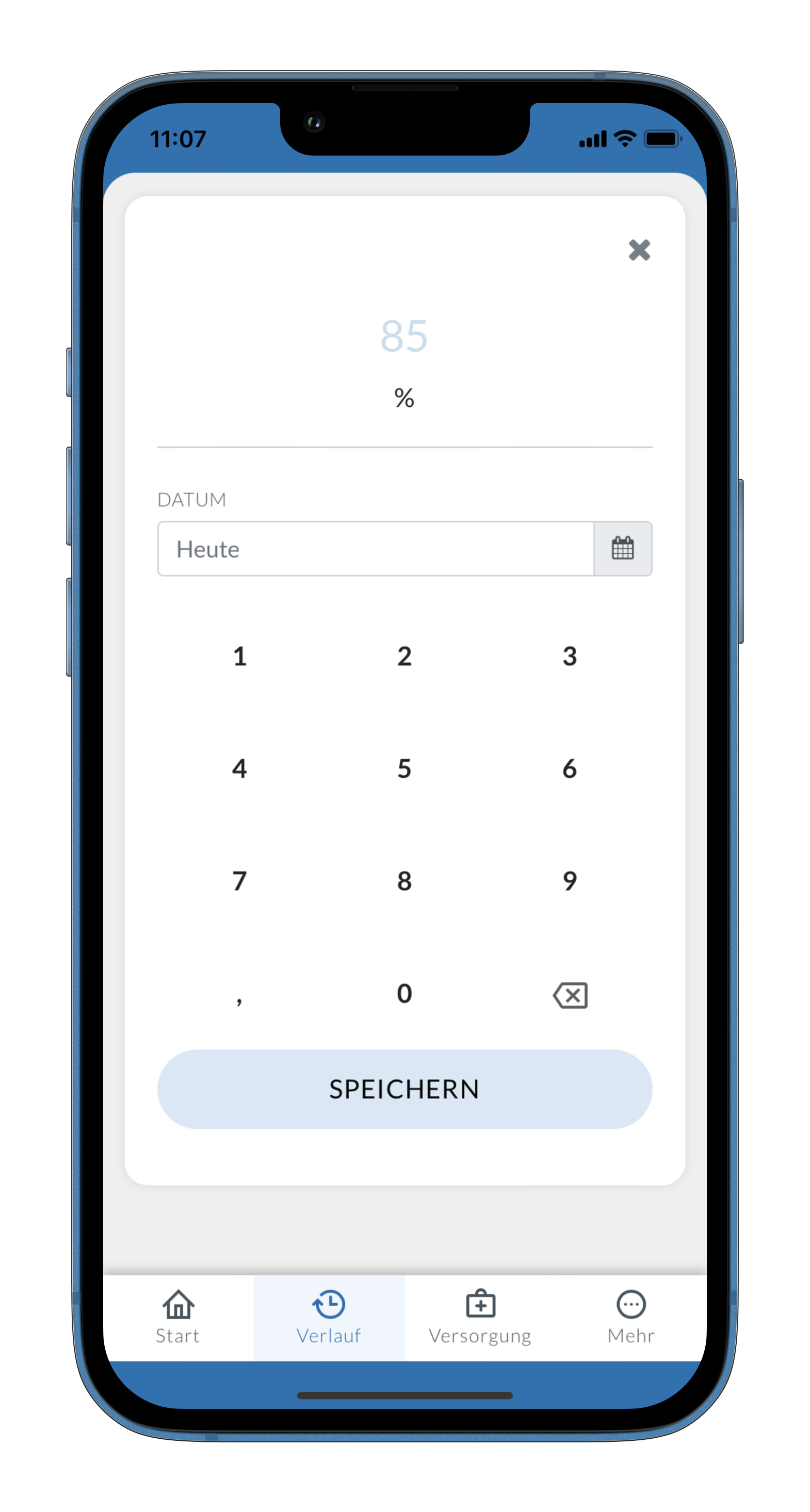
Input of the current vital capacity
The button 'Add value' opens the input mask for the current value of the vital capacity.
ALS can lead to an impairment of the respiratory muscles. This may also be associated with weakness of the cough. Cough weakness is manifested by a decrease in "cough thrust." The strength of the cough can be determined by measuring the peak cough thrust (Peak Cough Flow, PCF) determine. The peak cough thrust indicates the maximum expiratory velocity during a cough thrust. It is normally above 270 l/min in adults.
ALS-App Tutorial: Cough Tip Push (PCF)
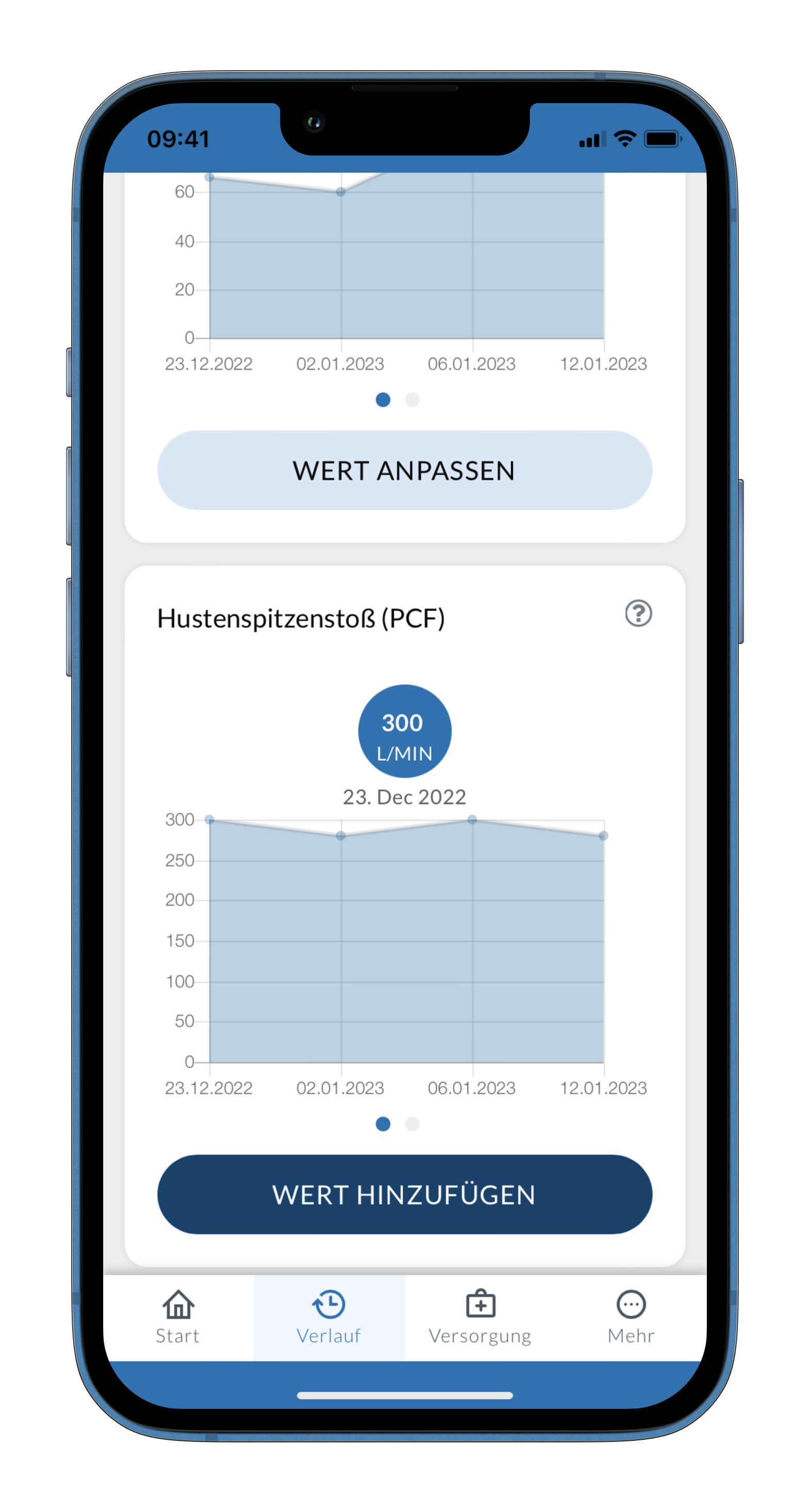
Course of the cough peak impact
On the My Vital Signs page, you will find the time course of the values of the cough peak impact in the form of a progress chart.
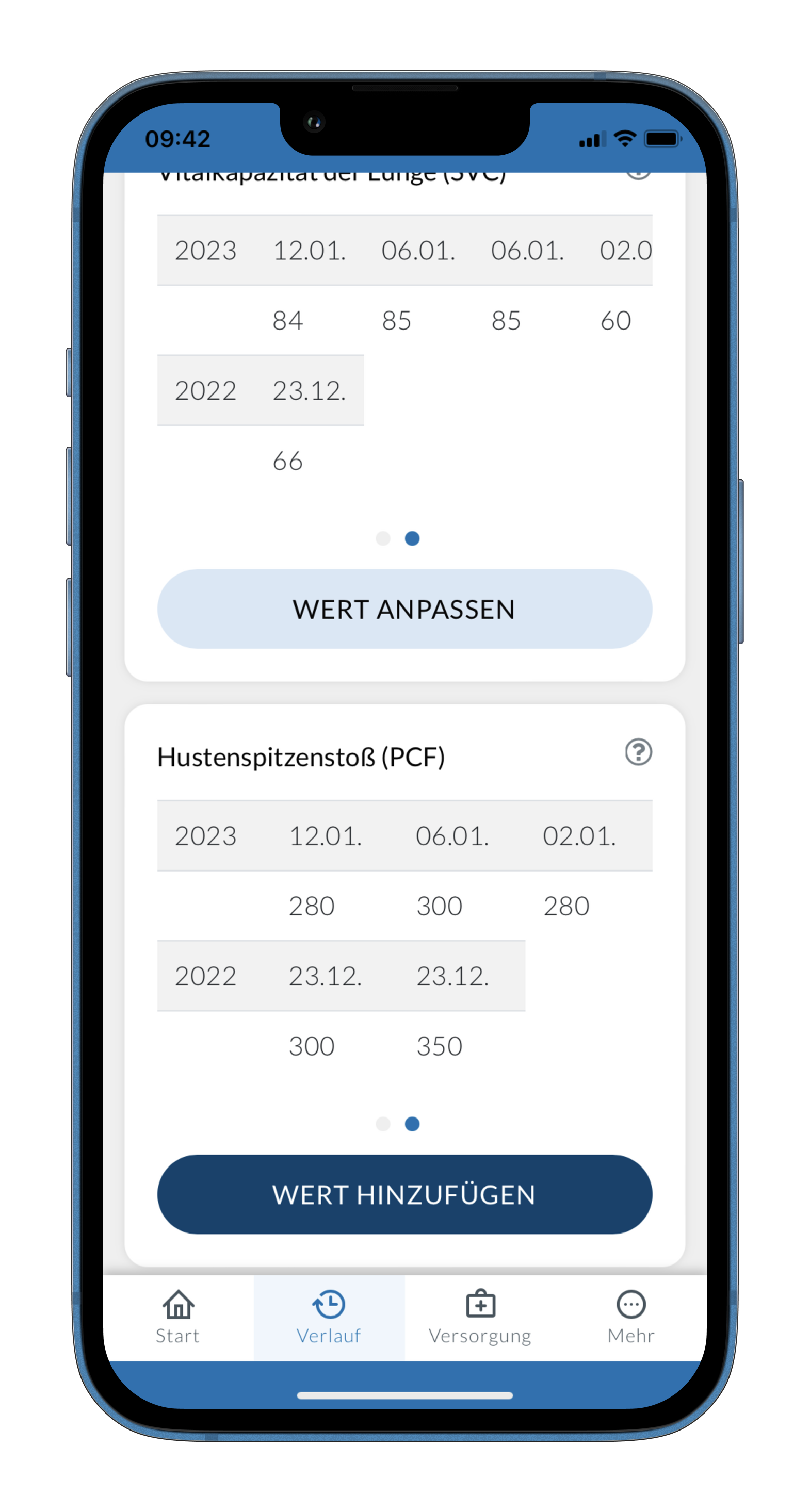
Course of the values of the cough peak impact in a table
A selection menu in the upper right corner enables the display of the temporal course of the cough peak impact as a diagram or table.
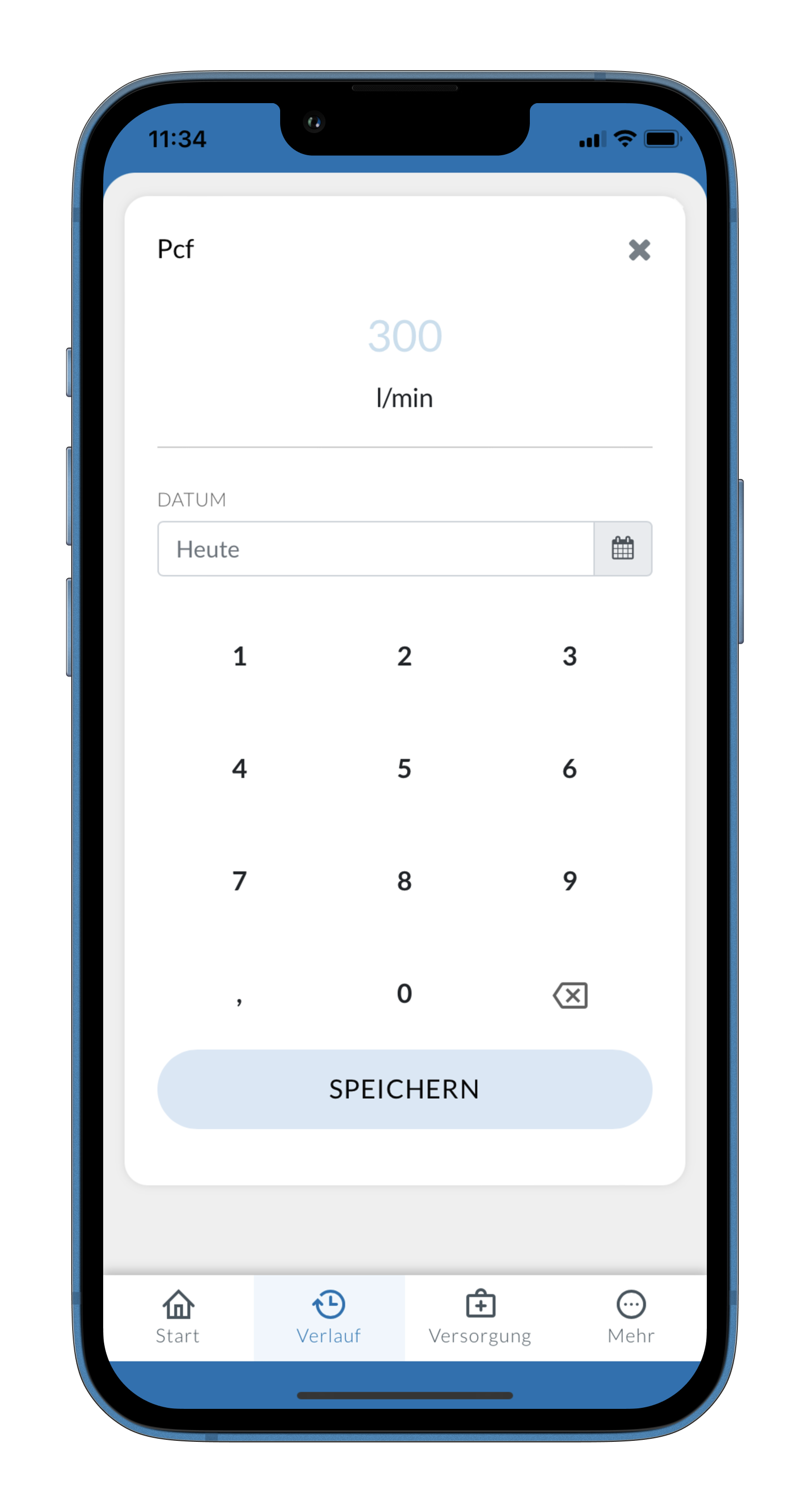
Input of the current value of the cough peak impact
The 'Add value' button opens the input mask for the current value of the cough peak impact.
